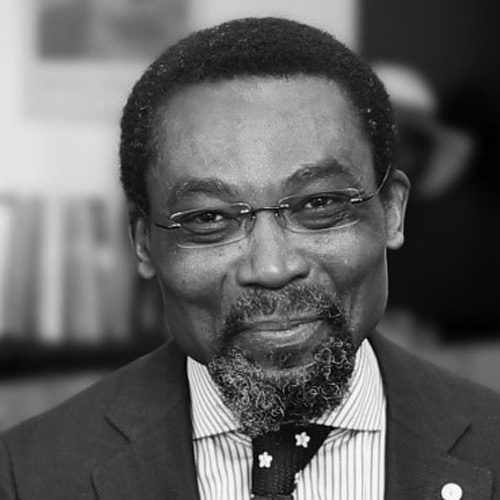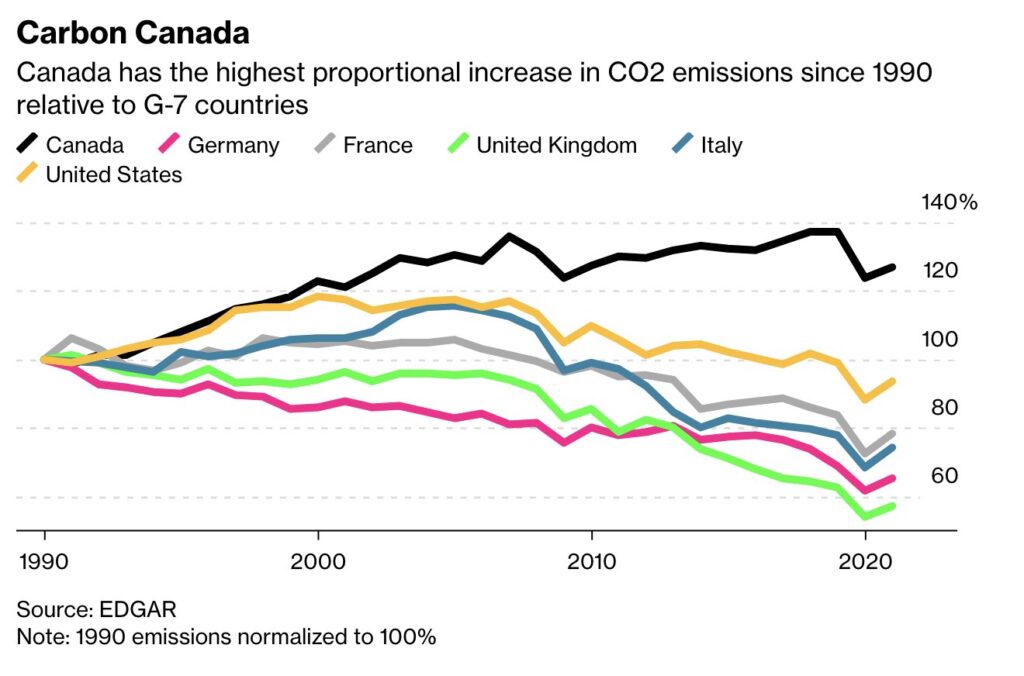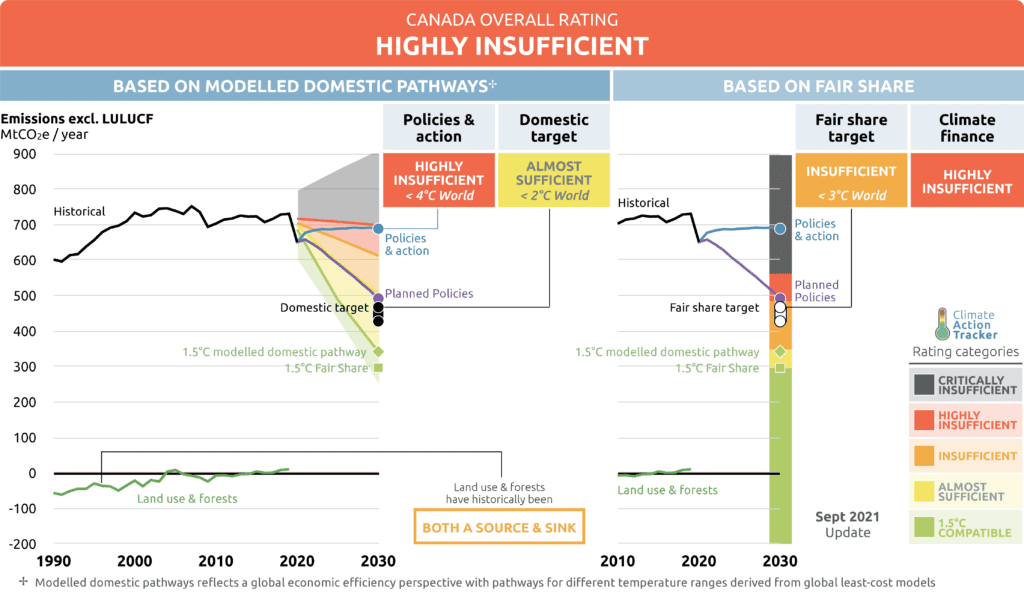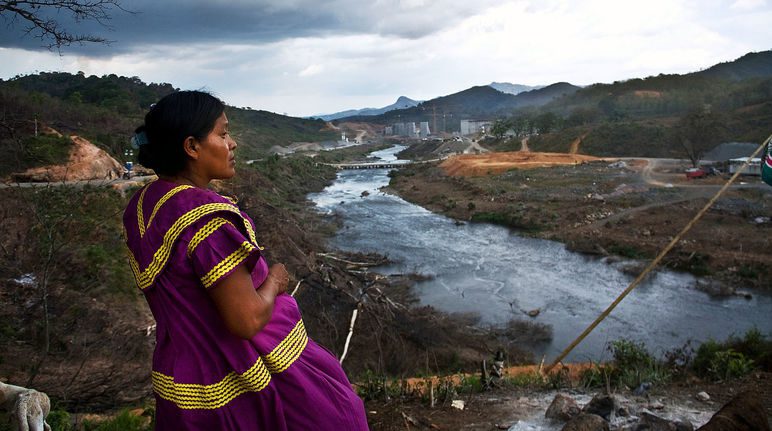Chile Eboe-Osuji[1]
The Rouleau Commission of Inquiry
The Public Order Emergency Commission, chaired by Mr Justice Paul Rouleau, has finally released its report. The Commission’s report is lengthy. It comes in five volumes, totalling more than 2000 pages. Even the executive summary (volume 1) took up 272 pages.
The Commission was established to inquire into the legality of Prime Minister Justin Trudeau’s declaration of national emergency between 14 and 23 February 2022, and the measures taken in dealing with that emergency as declared.
For purposes of this commentary, it may help to recall in summary the factual circumstances that led to the declaration of emergency. For more than two weeks in February 2022, news of the world trained its sights on Ottawa and the Ambassador Bridge that connects Windsor and Detroit. Ottawa got the lion share of attention, as it is the seat of the federal government. Drivers of heavy lorries used their rigs to block the streets of downtown; constantly blaring their horns, revving their engines and making whatever noise they could use their vehicles to make. They meant to be an intolerable nuisance and it was bedlam in Ottawa. The resulting pollution was not only auricular (until a judge issued an injunction to stop the blaring of horns); there were also the exhaust fumes from the engines that ran all the time. Symbols of hate, such as swastikas and confederate flags, were also part of the paraphernalia on display at the protests.
The truckers of the so-called “Freedom Convoy”—many of whom presumably do cross-border haulage—were protesting the federal government’s imposition of measures aimed at combatting the Covid19 pandemic. Amongst other things, those measures included requiring proof of full vaccination and a negative PCR test (taken no longer than 72 hours) before entry into Canada. Millions of dollars poured in (including from the United States) to support the protest. All that continued until the Prime Minister declared national emergency, using the attendant powers to shut down the protest and clear the streets.
The object of the Rouleau Commission inquiry was to establish whether the Prime Minister’s declaration of national emergency and the measures taken under the resulting power amounted to an abuse of powers, given the tests set out for declarations of national emergency. The National Emergency Act requires the existence of “an urgent and critical situation of a temporary nature that (a) seriously endangers the lives, health or safety of Canadians and is of such proportions or nature as to exceed the capacity or authority of a province to deal with it, or (b) seriously threatens the ability of the Government of Canada to preserve the sovereignty, security and territorial integrity of Canada” and which situation “cannot be effectively dealt with under any other law of Canada.”
Another Use of National Emergency Powers
The occasion brings to mind another time, not long ago, when another political leader used his country’s national emergency powers in circumstances that mark a very sharp contrast from those in which Prime Minister Trudeau used his own.
Many will recall that President Trump Administration was a dark period for the multilateral international order. Amongst the victims of his attacks were the World Health Organisation, the World Trade Organisation, the Human Rights Council, UNESCO, to name a few. The International Criminal Court bore a special brunt of Mr Trump’s calumny against the international order. A major issue for his Administration was that the ICC Chief Prosecutor, Ms Fatou Bensouda, had insisted on also (I shall explain that later) investigating allegations that US personnel had committed torture in Afghanistan as part of the US Government’s war on terror. In response, Mr Trump imposed economic sanctions against the ICC Chief Prosecutor and one of her senior aides, invoking powers conferred upon US Presidents by various legislation including the International Emergency Economic Powers Act and the National Emergencies Act. The Administration even threatened to do the same thing to the Court’s judges.
Apparently, in the view of the Trump Administration, the ICC Prosecutor’s insistence upon doing justice according to both international law and United States law was something that threatened the national security of the United States, thus compelling Mr Trump to impose sanctions against the Chief Prosecutor, on grounds of “national emergency.”
Notably, the treaty that established the ICC (the Rome Statute) gave the Court a back-stop jurisdiction over international crimes allegedly committed within the territory, or by a national, of a Court’s member State, such as Afghanistan, if that state proves unwilling or unable to investigate and prosecute the crime.
According to a principle of international law, notably articulated by the US Supreme Court in the Schooner Exchange case in 1812, every country has, as a general proposition, absolute jurisdiction over events within its territory. That includes the actions of foreigners. It is also the sovereign right of the country with jurisdiction to sign over that jurisdiction to another competent national or international authority, typically by treaty. That is what Afghanistan did when it became a party to the ICC treaty.
Afghanistan was clearly unable or unwilling to exercise jurisdiction over rampant criminality within its territory including terrorist acts such as beheadings, suicide bombings, and improvised explosive device attacks. The ICC’s interest was thus to do justice in behalf of the victims who had not received it in Afghanistan in respect of these crimes. No one ever suspected the US personnel in Afghanistan to be implicated in these crimes of terrorism.
The matter was that the Prosecutor was not prepared to take a blinkered approach to her investigations, by focusing exclusively on these crimes of terrorism while doing her best to avoid probing into allegations that US personnel had committed torture in Afghanistan. Notably, the inquiry of a US Senate select committee chaired by Senator Feinstein, which found that US personnel had committed torture as part of their war efforts in Afghanistan, made it difficult for the Prosecutor to look the other way.
Torture is a crime in both international law and in US national law. The Convention Against Torture requires criminal punishment of those who commit it. It is a war crime when committed as part of a war effort. It is not only the Rome Statute that says so in articles 7(1)(f) and 8(2)(a)(ii) amongst other provisions; in their common provisions that outlaw grave breaches, all the four Geneva Conventions of 1949 also make torture a punishable war crime. The US is not a party to the Rome Statute, but it is a party to both the Convention against Torture as well as the Geneva Conventions. Notably, those treaties are part of the US federal law, in light of article 6 of the US Constitution which provides that treaties ratified by the Senate are part of the “supreme law of the land.” Within the US itself, the Lieber Code, a US Civil War era national legal instrument, also forbids torture. Also notable amongst other US federal law that requires punishment of American officials and agents who commit torture, even while abroad, is section 2340A of Title 18 of the United States Code. In that connection, the US Congress, on 28 October 2004, declared it a sense of Congress that the “Constitution, laws, and treaties of the United States and the applicable guidance and regulations of the United States Government prohibit the torture or cruel, inhuman, or degrading treatment of foreign prisoners held in custody by the United States.”
The essence of the ICC Prosecutor’s insistence on investigating the allegation that US personnel had committed torture was that those who violate these legal norms must be held accountable. How then could it be reasonable to consider that insistence on the rule of law and justice as a threat to the national security of any nation, let alone the United States? It was thus unsurprising that when he came into office, President Biden sensibly reversed Trump’s sanctions against the ICC Chief Prosecutor.
The Limits of Rights and Freedoms
Prime Minister Trudeau’s use of national emergency powers is a very different world from Mr Trump’s use of emergency powers in the US to attack the ICC. The Rouleau Commission saw no abusiveness in Mr Trudeau’s use of the power. It is a phenomenon of the age that conspiracy theories will be spun by those who do not like the Commission’s findings, all in a bid to discredit the report. Those theories are baseless.
There is no question that the pandemic genuinely tested the limits of the patience of many around the world. But surveys repeatedly showed that a majority of Canadians supported the federal government’s vaccine mandate, as well as those of the various provincial and municipal governments. It was also significant that the Canadian Trucking Alliance issued a statement “strongly” disapproving of the truck convoy blockade of Canadian public roads and thoroughfares. The Alliance added that a vast majority of the Canadian trucking industry is vaccinated, at a rate that matches the general population.
These reports raised the question about the political warrant of those intent on using large lorries to choke Ottawa up until the federal government reversed its vaccine policy that a majority of Canadians (and most truckers) apparently supported. Was the protest even politically innocent? In asking that question, one notes the prominent feature of placards—and signs on protesters’ vehicles—bearing anti-Trudeau expletives. These were the same sort of signs that had been on prominent display amongst counter-rallies organised to disrupt Mr Trudeau’s campaigns during the immediately preceding election, events at which projectiles and spittle were directed at him. Indeed, some of the protesters had declared that their aim was to bring down the Trudeau Government, and there were reports that the Governor-General’s office was inundated with calls to dissolve the Government.
One is thus left to wonder whether those who opposed the election of the Trudeau Government during the preceding election had regrouped not only to force the government to reverse a crucial policy that defined the times, but also to bring down a government that they did not help to elect. If so, was that the way to do democracy?
There is also the equally disturbing question of the methods that were employed during the protests. Annals of protests have seen sit-ins and campouts, withholding of services, group nudity by protesting women in cultures in which public nudity is a serious taboo. People have been known to wield harmless parts of trees and shrubs as symbols of protests. Other protests have been less charming than presenting flowers to security personnel clad in anti-riot gear, such as when protests involved urination or worse on government premises or public spaces. Nuisance all these may be, but they are ultimately peaceful.
The use of large trucks is a very different matter. Driving them into place, blaring their horns relentlessly at decibels that cause hearing loss, revving engines and spinning wheels all involve conducts that are more than passive aggressive. These behaviours would legally qualify as assault. At the very least, they amount to using very large trucks as weapons of mass disruption, nuisance and intimidation. Considering that a much smaller vehicle in the hands of a malcontent can be readily used as a weapon against life and safety (as some terrorists have done) the error of using huge lorries to force a political outcome becomes very clear.
It was thus significant that the anti-vaccine protests had been cast as assertions of “rights and freedoms.” The argument and assumption are that citizens have rights and freedoms with which the government must not interfere. As the protesters argued, their lives are their own. So, they had the right to go wherever they pleased in the community, and to be as close as they pleased to anyone else, without vaccination and wearing no masks. Was it as simple as all that? What about the rights of the majority of Canadians who wanted to be protected against the pandemic and its detrimental effects on their own health?
*
Ultimately, the silver lining in the protests is the opportunity it presented to revisit the importance of civics in schools. Teaching citizens about “rights” and “freedoms”—and the limitations that come with them—must not be the exclusive preserve of university law faculties. It is hoped that the average civics teacher in elementary or high school teaches pupils and students that “rights” and “freedoms” are never cast in absolute terms. The Rouleau Commission, resulting from what must be the most high-profile protest in Canada’s recent history, should help to inform that lesson. The Commission was spot on in driving home the message that “no rights are absolute.” [See Report of the Public Inquiry into the 2022 Public Order Emergency, vol 1, p 24.] It is a point, which the Commission was careful to underscore as “often seems to be forgotten in discussions about fundamental freedoms.” [Ibid, p 22.]
The constitutional guarantee of freedom of expression, for instance, “protects a person’s right to communicate a message, as long as the method and location of that expression is compatible with the values of truth, democracy, and self-realization.” [Ibid, p 23.] Understandably, the Commission was careful to point out that protection of free speech is not conditional on the message being conveyed or its meaning. “There is protection for expression regardless of the meaning or message sought to be conveyed.” [Ibid, p 23.]
The circumstances of a particular protest may present difficult questions about the manner of the exercise of the right to speech. Violence is not protected speech. But what about disruption? Does free speech lose its protection when exercised in the manner of disruptive protests, merely because the Canadian Charter of Rights and Freedoms guarantees only “peaceful” assemblies? Not necessarily, said the Commission. In its view, “it can be reasonable to protect assemblies that produce an element of disruption. Many public protests are disruptive, and that disruption may be central to their efficacy. This is especially true for groups and communities who are otherwise politically marginalized.” [Ibid, p 23.]
In addition to “truth, democracy, and self-realization” that the Commission identified as values that may inform the limits of free speech, it is also important to underscore public safety and the rights of other citizens as other factors that must be brought into accommodation in any exercise of right or freedom.
In any society in which citizens are equal, none can claim a greater entitlement in the shared civic space to enjoy his own right, than that which his fellow citizen should have to enjoy hers. That consideration is not readily bypassed by the sheer strategy of uniting in a group in order to assert a particular right. The futility of that strategy is readily evident in the phenomenon of counter-groups formed to assert a right that is inconsistent with the right asserted by the first group. It all calls for reasonable accommodation, the spirit of give and take, when rights are claimed or asserted. How that is achieved in any given case will depend on its own circumstances. Ultimately, it falls to the government to step in and help to modulate the conflicting rights. That is the chief task of government.
*
The Rouleau Commission was an occasion to remind Canadians about the existence of other important provisions in the Canadian Charter of Rights and Freedoms. Primarily section 1. It accepts limitations to rights and freedoms, subject to judicial determination that the limitation in question is reasonable in a free and democratic society.
Also to be noted is section 33 of the Charter, which allows the legislature to enact legislation and specifically insulate it from judicial inquiry about whether the law violated a right or freedom apparently protected by the Charter. Of, course, the government whose legislature would invoke section 33 exposes itself to political accountability at the polls for doing so.
*
It is important to point out that the permissibility of reasonable limitation on rights and freedoms is seen not only in the Constitution of Canada. It is also the case in international law. Notably, having listed the fundamental rights and freedoms that people must enjoy, the Universal Declaration of Human Rights stresses two countervailing norms in article 29. First, everyone also owes “duties to the community” that sustains him or her in the full enjoyment of all those rights and freedoms. And, second, “[i]n the exercise of his rights and freedoms, everyone shall be subject only to such limitations as are determined by law solely for the purpose of securing due recognition and respect for the rights and freedoms of others and of meeting the just requirements of morality, public order and the general welfare in a democratic society.” Similarly, in the International Covenant on Civil and Political Rights, the same theme of duty upon all rights-bearers is stressed. So, too, reasonable limitations to rights and freedoms are permissible. In particular, the Covenant recognises [in articles 4, 6(1), 8(3)(a), 9(1), 12(1), 13, 14(1), 18(3), 19(3), 21 and 22(2)] that governments may adopt laws that are reasonably necessary to protect public safety, order, health, or morals or the fundamental rights and freedoms of others.
It is against that background that the following claims of the “Freedom Convoy” protesters must be considered: (a) their claim of entitlement to ignore a fellow citizen’s right to life during a pandemic when they defy the government’s pandemic control measures; (b) their claim to entitlement to force the government to end the pandemic control measures for everyone; and, (c) their claim to entitlement to subject their fellow citizens to harassment and intimidation and denial of freedom of movement, using large lorries.
*
It has to be said that the law’s recognition of the possibility of reasonable limitation to rights and freedoms is not to say that whatever government does must be accepted as reasonable limitations on rights and freedoms. But there are orderly ways of challenging the correctness of laws and government policies and decisions. Those orderly ways do not leave it to everyone to be the judge and the enforcer of his or her own judgment of his or her own understanding of his or her own rights and freedoms, even using trucks or other physical objects liable to intimidate and harass fellow citizens.
Citizens who wish the government to terminate its policies as unlawful or unreasonable limitation on rights and freedoms can bring legal proceedings before national courts or international treaty bodies such as the United Nations Human Rights Committee. The litigants can call evidence that support their cause of legal action.
Using the legal process, those who opposed vaccination might even have been in a respectable position to liberate their underlying concerns from what many would dismiss as crank conspiracy theories: such as the allegations that the pandemic had all along been a profit-oriented hoax deployed or hyped up by multinational businesses intent on exploiting fears of peoples and their governments around the world. A global history of capitalism gone rogue may attract sympathy to aspects of these concerns. But, what was needed was credible evidence presented in the proper forum of a court of law, not unsubstantiated conspiracy theories.
In the end, the Rouleau Commission did not give a free pass to the citizens who would use intimidating physical objects to compel governments to reverse a policy that a majority of their compatriots support.

[1]Chile Eboe-Osuji was the President of the International Criminal Court from 2018 to 2021. He is the Distinguished International Jurist and Special Advisor to the President at Toronto Metropolitan University; Paul Martin Senior Professor at University of Windsor; Visiting Professor, University of California Los Angeles School of Law, formerly Distinguished Visitor, University of Toronto Law Faculty; formerly Herman Phleger Visiting Professor of Law at Stanford Law School; and, formerly Senior Fellow, Carr Center of Kennedy School, Harvard University.




